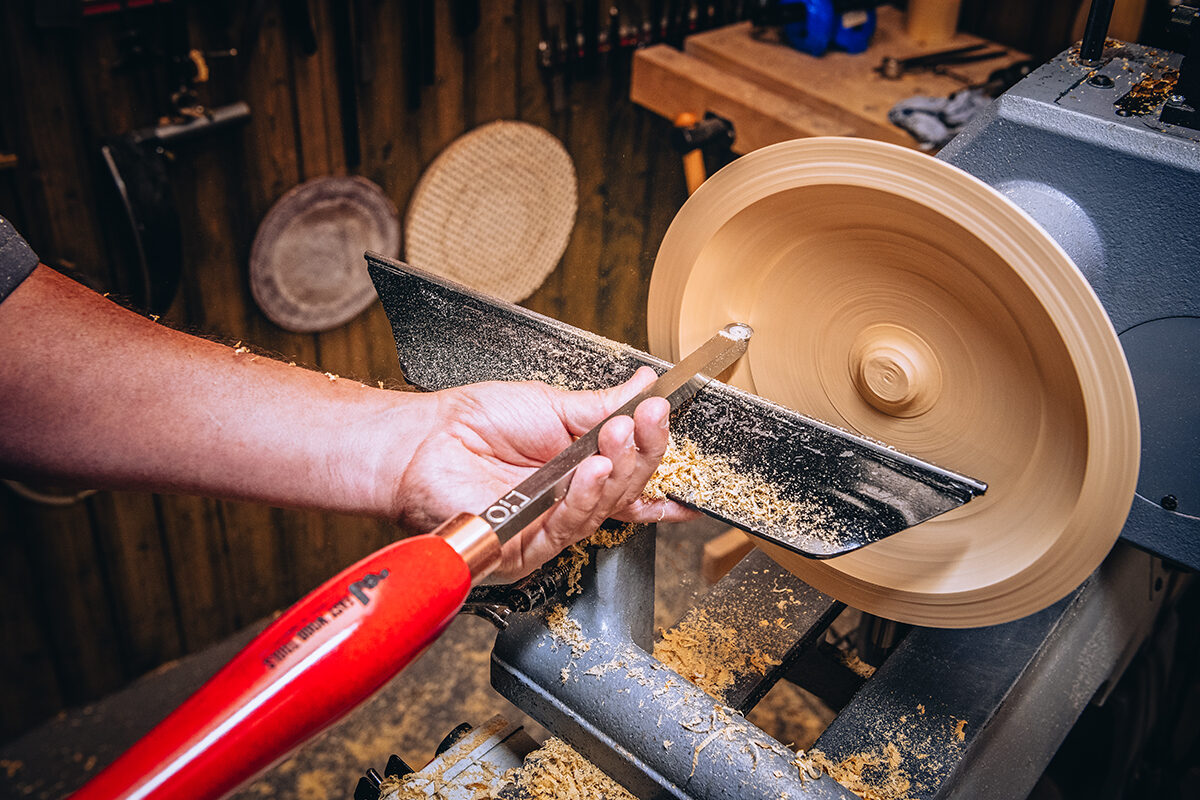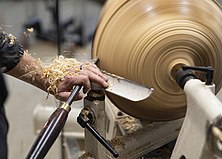Table of Contents
Woodturning requires selecting the right type of wood for durability and finish quality. Common choices include maple, cherry, and walnut.
Wood for turning must balance workability, durability, and aesthetic appeal. Maple is a popular choice due to its fine grain and hardness, making it suitable for intricate designs. Cherry wood is another favorite, offering a rich color and smooth finish.
Walnut provides a dark, elegant look, perfect for high-end projects. Each type of wood has unique characteristics, influencing the final product’s appearance and longevity. Beginners often start with softer woods like pine, as they are easier to shape and less likely to dull tools. Advanced turners prefer hardwoods for their superior finish and strength. Selecting the right wood ensures a successful woodturning project.

Credit: m.youtube.com
Introduction To Wood Turning
Wood turning is an ancient craft. It involves shaping wood on a lathe. The lathe spins the wood. The turner uses tools to carve and shape it. This craft creates beautiful objects. Bowls, vases, and pens are popular items. Wood turners need skill and practice. It is both an art and a craft. The results can be stunning. Each piece of wood is unique. This makes every creation special.
Choosing the right wood is crucial. Different woods have different properties. Some woods are hard. Others are soft. Hardwoods are often preferred. They are durable and look beautiful. Softwoods can be easier to work with. Each type of wood has its own beauty. Grain patterns and colors vary. Wood selection affects the final product. The right wood makes turning easier. The finished piece looks better and lasts longer.
Characteristics Of Ideal Turning Woods
Good turning woods have distinct grain patterns. These patterns add beauty to finished pieces. Fine, even textures are preferred. They allow for smooth and detailed work. Open-grained woods can be challenging. They may need more sanding to achieve a smooth finish.
Durable woods last longer. They withstand wear and tear. Hardwoods are ideal. They are less likely to dent or scratch. Softer woods are easier to turn. They are good for beginners. Balance between hardness and workability is key.
Top Choices For Wood Turning
Maple wood is popular for its versatility. It is easy to turn on the lathe. The wood has a smooth grain and light color. Maple can be stained to look like other woods. Its durability makes it great for functional pieces. Many woodturners love maple for its clean finish. The wood is also readily available. This makes it a cost-effective choice.
Walnut wood is known for its rich, dark color. The grain patterns are unique and beautiful. Walnut is slightly harder to turn than maple. However, the effort is worth it. Finished walnut pieces look luxurious. The wood is also strong and durable. Many turners choose walnut for high-end projects. It adds a touch of elegance to any creation.

Credit: www.axminstertools.com
Exotic Woods For Special Projects
Cocobolo wood has bright colors. It shows reds, oranges, and browns. The wood is very hard and durable. Many woodworkers love it. They use it for special projects. It also has a nice grain. This makes it look even better. Cocobolo is also resistant to water. This adds to its durability.
Ebony wood is very dark and rich. It feels smooth to touch. It is also very dense and heavy. People use it for high-end projects. It is perfect for making musical instruments. It is also used in fine furniture. Ebony wood is very strong. It lasts a long time.
Budget-friendly Woods For Beginners
Beginner woodturners can explore budget-friendly options like poplar, pine, and ash. These woods offer easy handling and excellent results, making them ideal for practice and learning.
Pine: Soft And Easy To Shape
Pine is a great choice for beginners. It is soft and easy to shape. Pine is also very affordable. This makes it ideal for those just starting out. The wood has a light color. It takes paint and stain well.
Poplar: Affordable And Lightweight
Poplar is another good option. It is affordable and lightweight. Poplar is easy to find in stores. The wood is easy to cut and sand. It has a smooth finish. This makes it great for detailed work.

Credit: en.wikipedia.org
Factors Affecting Wood Selection
Wood choice depends on the project type. Small projects need softer woods like pine. Larger projects may use harder woods like oak. The size of the wood piece is crucial. Big projects need longer wood pieces. Smaller projects can use shorter pieces. The weight of the wood matters too. Light wood is easier to handle. Heavy wood might be stronger but harder to work with.
Local wood is often cheaper. Exotic wood can be expensive. Some woods are rare and cost more. Common woods are usually more affordable. Prices can change with the season. Wood quality affects the price. Higher quality wood costs more. Lower quality wood is cheaper but may not last long.
Preparation And Care Of Turning Woods
Seasoned wood is key for quality turning. Freshly cut wood contains a lot of moisture. This can cause issues while turning. Drying wood correctly prevents cracking and warping. Place cut logs in a dry place. Ensure good air circulation. Rotate the logs occasionally. This helps even drying. Patience is essential for this process.
Proper storage of wood is crucial. Keep wood in a stable environment. Avoid areas with high humidity. Store wood flat and off the ground. Use spacers between layers. This allows air to flow freely. Protect wood from direct sunlight. Sunlight can cause uneven drying. Cover the wood with a tarp, but allow air to circulate.
Showcasing Finished Projects
Use a high-quality varnish for a shiny finish. Apply multiple coats for better protection. Sand between coats for a smooth surface. Choose natural oils for a subtle shine. Oils penetrate the wood for a durable finish. Wax finishes add a soft glow. Buff the wax for extra shine.
Place your crafts in a well-lit area. Use shelves to showcase multiple pieces. Ensure the background does not distract from your work. Use stands for smaller items. Rotate your pieces to show different angles. Keep your display clean and dust-free. A good display highlights your skills and effort.
Frequently Asked Questions
What Wood Is Best For Turning?
The best wood for turning includes maple, cherry, and walnut. These hardwoods are stable and easy to work with. For beginners, softwoods like pine are also good. Choose wood that is free from defects for best results.
Can You Turn Any Type Of Wood?
Yes, most types of wood can be turned. Some woods are better suited for turning due to their grain and hardness.
What Wood Is Used For Turning Projects?
Maple, cherry, walnut, and ash are popular woods for turning projects. Each type offers unique grain patterns and workability.
Is Pine Good For Woodturning?
Yes, pine is good for woodturning. It is soft, easy to work with, and widely available. Pine produces smooth finishes and is suitable for beginners.
Conclusion
Choosing the right wood for turning is crucial for successful projects. Each type offers unique characteristics and benefits. Understanding these differences ensures you select the best wood for your needs. Start experimenting with various woods to find your favorite. Happy turning!